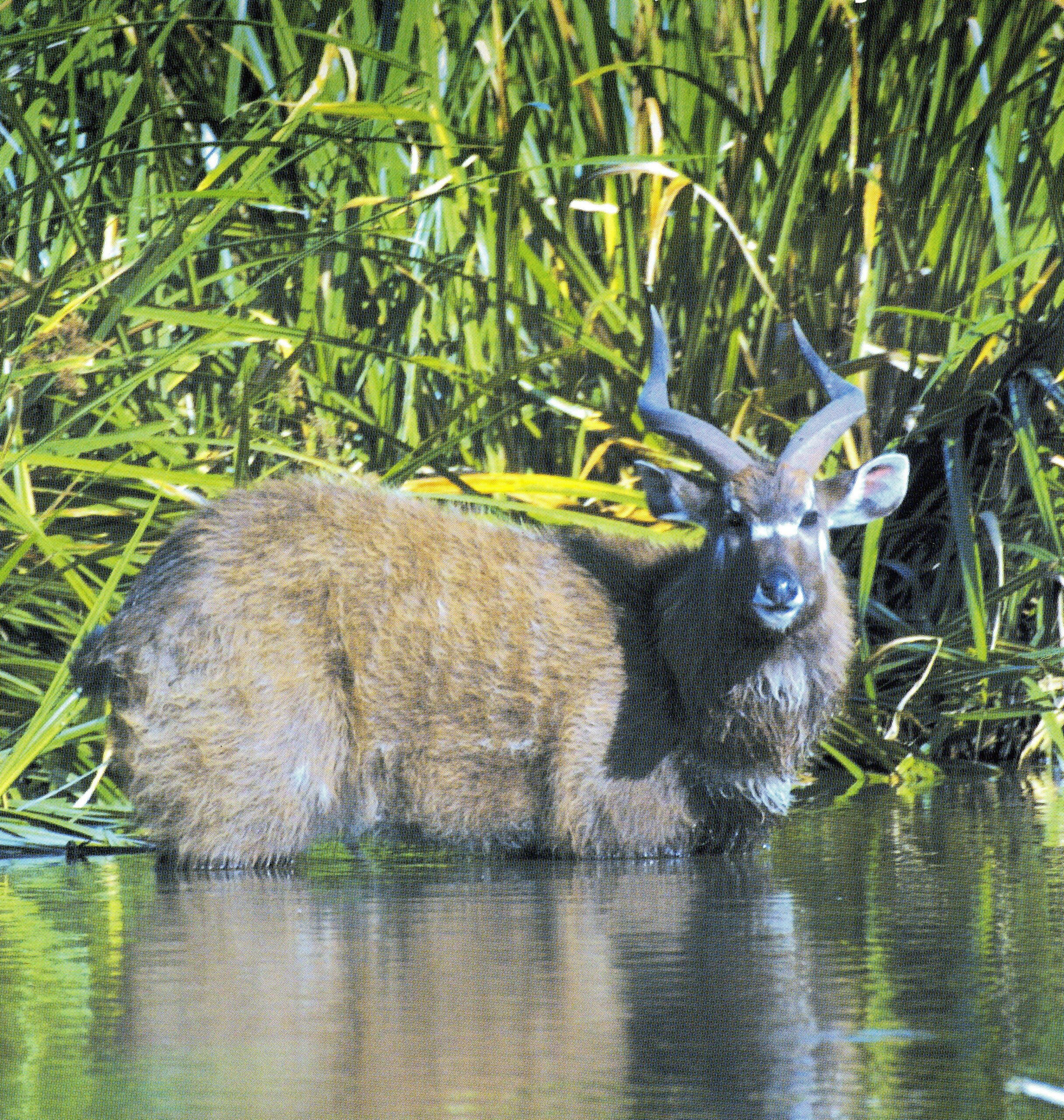
Saiwa Swamp National Park
“Sanctuary of the Sitatunga antelope’’
A veritable haven for nature lovers, the Saiwa Swamp National Park is a forested paradise filled with exotic flowers, trees, and birds. It is also the habitat of the rare and endangered semi-aquatic Sitatunga antelope and a preserve for the rare De Brazza’s monkey. Within these tropical wetlands and mosaic of riverine forest, sedges, and acacia woodlands, with fringing dense rushes and grass bedsBird life is abundant. Water birds include the lesser jacana, grey heron, and also the African black duck while the forest shelters the Narina trogons, the collared and orange-tufted sunbird, the yellow bishop, Hatlaub’s marsh widow bird, and also the Noisy Ross’s turacos which are difficult to miss.
Saiwa Swamp National Park is located near Kitale, in Trans-Nzoia County, Rift Valley Province, Kenya. It is the smallest national park in Kenya, only 3 km2, and was created as a habitat for the Sitatunga, a rare aquatic antelope. There are a variety of trees at the national park. Saiwa Swamp National Park is the smallest tour destination park in Kenya, a Sanctuary of the Sitatunga antelope and packed with a lot of wildlife to explore from plants, birds, insects, and also reptiles
Park activities
Bird watching
Corporate & Special Events
Game viewing
Photography
Scenic
How to get there
By Road: Saiwa Swamp National Park is 22km from Kitale town .At Kipsaina junction, a 5km “murram” road leads to the only park entrance, Saiwa gate.
By Air: Served by the Kitale airstrip, 27km away from the park.
Attractions
Bird Watching
- Bird life is abundant. Water birds include the lesser jacana, grey heron, and African black duck among others.
- The forest shelters the Narina trogons, one of Kenya’s most spectacular forest birds.
- Watch for the collared and orange-tufted sunbird, sipping nectar from the flowers of the forest edge.
- The yellow bishop often whirrs above the reeds, it’s blazing yellow back on display.
- Hartlaub’s marsh widow bird also frequents the rushes.
- Noisy Ross’s turacoes are difficult to miss.
- Gonolek is easy to see along the trails.
- Luther’s Bush-shrike is much shier while the Square-tailed drongo and the double-toothed barbet perch in the lower branches of forest trees.
- Cinnamon-chested bee-eaters abound, as do crowned cranes, especially when the surrounding farms plowed or harvested.
Plants
Within this tropical wetlands and mosaic of riverine forest, sedges, and acacia woodlands, with fringing dense rushes and grass beds, are some of Kenya’s loveliest terrestrial orchids. The bronze and purple eulophia horsfallii, the fleshy pink atrium classical and crimson satyrium sacculatum orchids abound. Also there are the cometorchid, with greny-white flowers afding to peach. Epiphtic fems also flourish.
Insects
The swamp is exceptionally rich in dragonflies and damselflies. Butterflies include swallowtails and also characters. The African mocker swallowtail, Papillion Dardanus, is very common after the rains: ants swam the forest floor.
Reptiles and Amphibians
Frogs and toads abound, with many different kinds of tree frogs trilling and piping after rainstorms. Bell’s hinged tortoise, a forest-dwelling species, is found in the park and the blue-headed tree agama lizard is sure to cross your path. Snakes include the forest cobra and African rock python. As you follow the trails, watch for a side-striped chameleon. They are common, but also easy to overlook due to their excellent camouflage.






